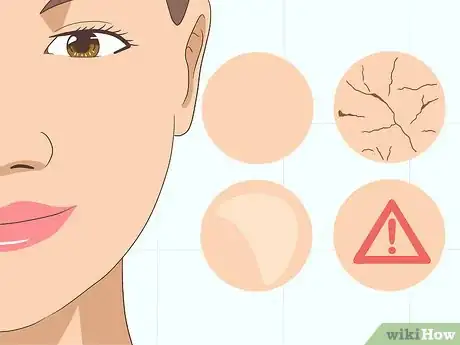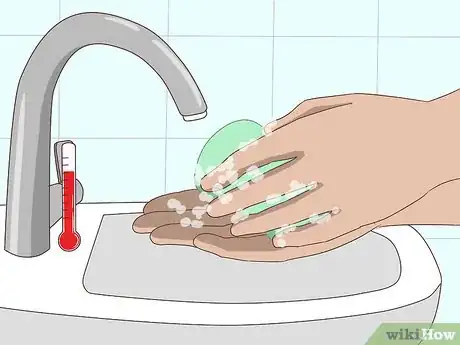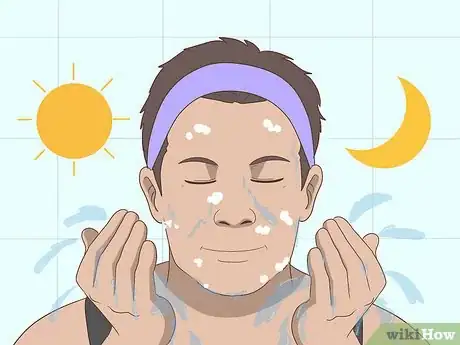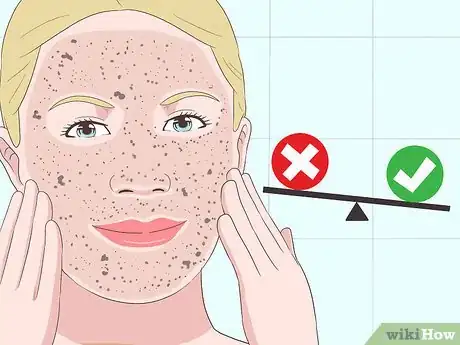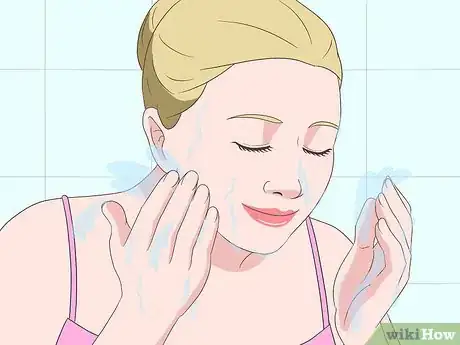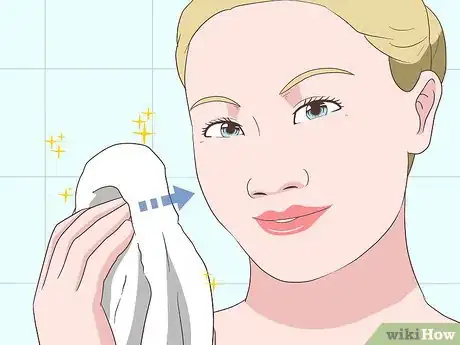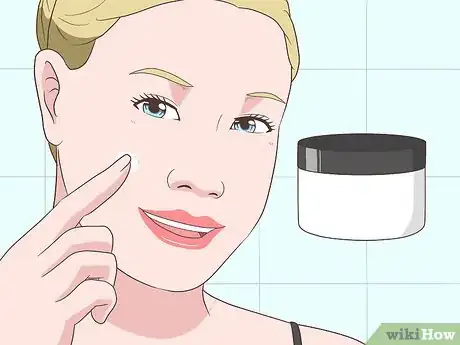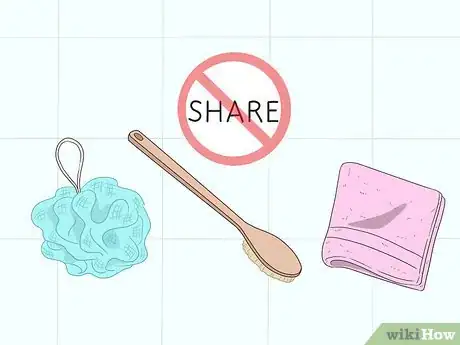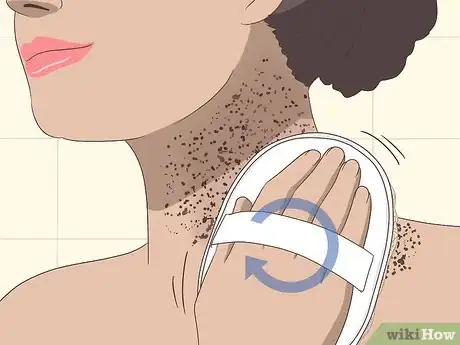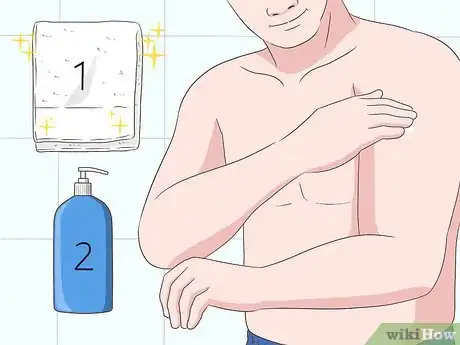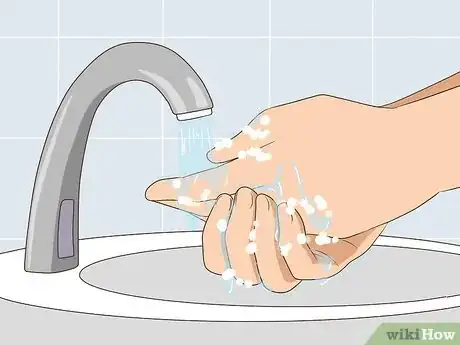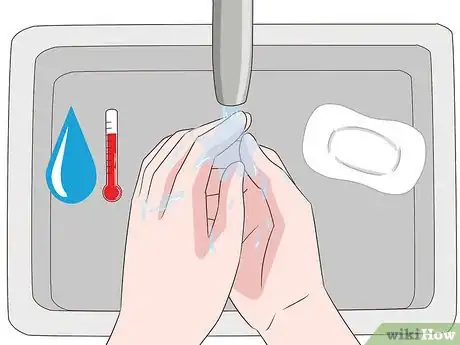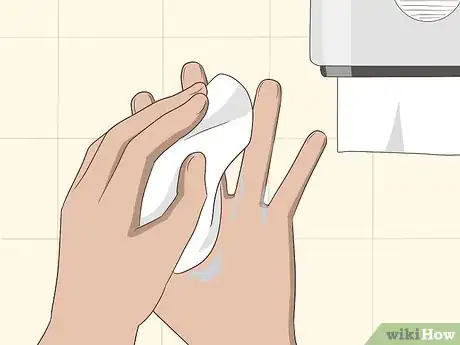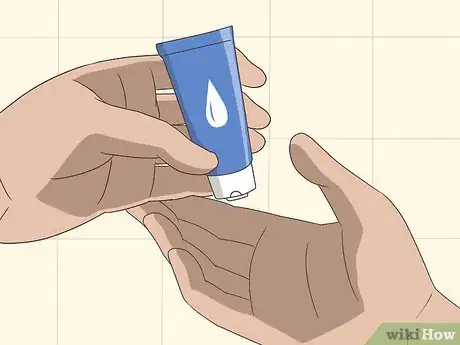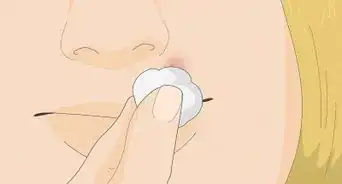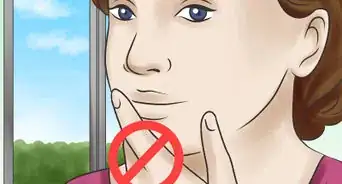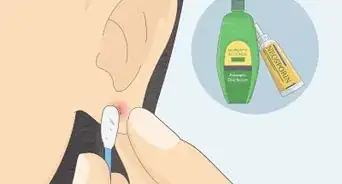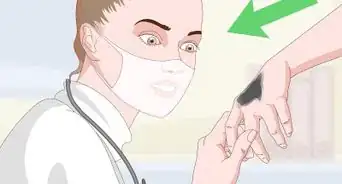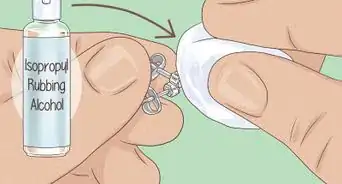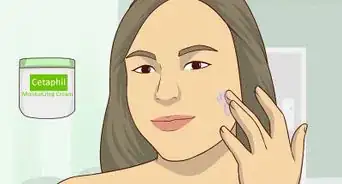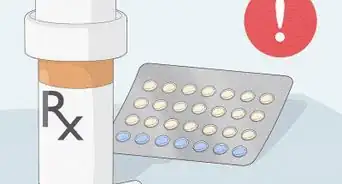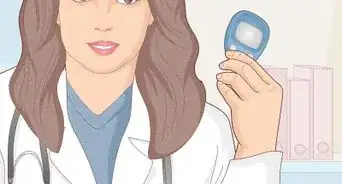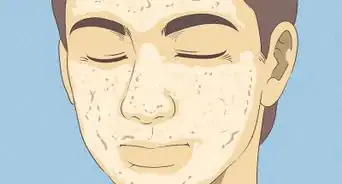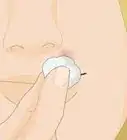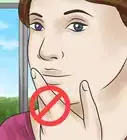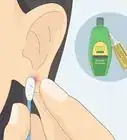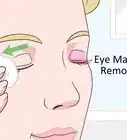This article was medically reviewed by Shari Forschen, NP, MA. Shari Forschen is a Registered Nurse at Sanford Health in North Dakota. Shari has worked in healthcare since 1996 and her expertise lies in acute care bedside nursing on a medical oncology floor. She received her degree from Medcenter one College of Nursing in 2003 and her Family Nurse Practitioner Masters from the University of North Dakota in 2014. Shari is a member of the American Nurses Association.
There are 11 references cited in this article, which can be found at the bottom of the page.
wikiHow marks an article as reader-approved once it receives enough positive feedback. In this case, 88% of readers who voted found the article helpful, earning it our reader-approved status.
This article has been viewed 564,793 times.
Many people don't realize that your skin is the largest organ in the body, but it is![1] Skin has the very important job of protecting the body from infections and germs, so it is important to help your skin out by taking care of it. Different parts of the body require different cleaning techniques, but the best way to take care of your skin is to make cleaning it a part of your daily routine.
Steps
Cleaning Your Face
-
1Figure out what type of face skin you have. Your skin changes as you age, especially during puberty, and looking for products in the skincare aisle at the drugstore can be confusing. There are so many options! Which should you choose? To find the right cleanser for your skin, it is important to first determine your current skin type:[2]
- Normal skin is not too oily and not too dry, with minimal blemishes and no severe sensitivity to products or weather.
- Oily skin often appears shiny or greasy, even if you recently washed your face. Oily skin is also prone to blemishes and larger pores.
- Dry skin is often flaky, with more visible lines and some reddish patches of skin.
- Sensitive skin is often mistaken for dry skin because it typically appears dry and red; however, the difference is that sensitive skin is often a result of a particular ingredient in a skin care product.
- Combination skin is when you have patches of skin that are oily in some areas and dry or normal in others. Combination skin is typically oily around the T-zone (the T-shaped area created by your forehead, nose, and chin) and normal to dry on the rest of the face.
-
2Wash your hands first. Before you start cleansing the skin on your face, be sure to wash your hands with warm water and soap to kill all the germs and remove dirt and grime. You wouldn't want to rub more germs all over your face, would you?Advertisement
-
3Wash your face twice a day with lukewarm water and a gentle cleanser.[3] Even if your skin looks clean, it's probably not. It is very important to cleanse your face every morning and every night before bed, especially if you wear makeup or are prone to breakouts. Keep in mind:[4]
- Don't use water that is extremely hot or extremely cold since this can damage your skin and trap grease and dirt inside your pores.
- Gently massage your face with slow, circular motions. Don't scrub! Scrubbing will cause skin irritation, redness, or breakouts.
- Treat the skin around your eyes extra gently, as it is the most delicate, sensitive skin on your face. Plus you don't want to end up with cleanser in your eyes!
- Don't over-wash your face! Even if you have oily skin, over-washing can cause dryness, and your skin will produce more oil to compensate, which means you could end up with oilier, more blemished skin.
-
4Find out if exfoliation is right for your skin. For some skin types and conditions, exfoliating can be helpful, such as those with sun damage. However, for other skin types, such as those with cystic acne, exfoliating can damage your skin. Check with a dermatologist to be sure if exfoliating is right for you.[5] Choose a scrub that's designed for your skin type and that is not too harsh. Some varieties include:
- Mild scrubs containing beads, sugar, salt or other types of natural exfoliators.
- Soft skincare brushes. These can be manual or oscillating brushes that you squeeze your cleanser or a mild scrub into before gently rubbing the brush on your face.
- Treatment masks that include mild acids like alpha-hydroxy acid or beta-hydroxy acid to slough off dead skin. Be very careful with this option and be sure to read the directions!
-
5Rinse your face thoroughly after cleansing or exfoliating. Using lukewarm water, gently rinse the cleanser from your face either with a clean washcloth or by cupping your hands under the sink and carefully splashing water onto your face.[6] Be sure all of the cleanser is removed, as any remaining cleanser can clog your pores and cause irritation and blemishes.[7]
-
6Pat your face dry with a clean, soft cloth.[8] Never dry your skin with a dirty hand towel in the bathroom or the same towel you use to dry off your body; you will just transfer new, fresh bacteria onto your clean face. Also, it is important to pat, not rub, your face dry in order to treat the skin as gently as possible.
-
7Moisturize your face. Apply moisturizer to your face after you dry it off.[9] Many people skip this step, but applying a moisturizer designed for your particular skin type is very important post-cleansing. Moisturizers seal in the existing water in your skin so it doesn't evaporate, which dries out your skin. You may need more moisturizer, or a thicker moisturizer, during the winter months.
Cleaning Your Body
-
1Shower or bathe every day using warm-to-hot water. In addition to removing dirt and oil that can cause body acne, showering or bathing once a day will help wash away the bacteria that causes body odor.[10] While very hot water should be avoided because it strips the skin of important oils, use warmer water when cleaning your body than you would on your face in order to kill the bacteria.
-
2Cleanse your body in the shower or bath safely. As with cleaning your face, it is important that your hands and the products you use to clean your body are hygienic. Bar soap and body wash are sanitary, but loofahs, scrubbers, and washcloths, especially ones that are shared, are not. Be sure every member in your house only uses their own products and wash or replace these regularly![11]
-
3Exfoliate your body once a week, focusing on acne-prone areas.[12] Since the skin on your body produces more sweat and oil than the skin on your face, you may want to invest in a body scrub to use at least once a week. Using a clean washcloth or loofah, focus your gentle, circular motions on areas that are prone to breakouts, like the chest, neck, and back.
- Don't exfoliate too much because this can make body acne worse and irritate your skin.[13]
-
4Pat your body dry with a clean towel and apply lotion. The skin on your body is less delicate than your face, but it is still important to only use a clean towel to dry off. Stay in the humid, steamy bathroom and towel off until you are only a bit damp, and then apply moisturizer to your entire body before exiting.[14] The steam helps with long-lasting hydration because the moisturizer sinks into your pores while they are still open.
Cleaning Your Hands
-
1Wash your hands well and wash them often. Cleaning the skin on your hands multiple times a day is extremely important for your health and for the health of others. Germs are everywhere, and some can make people very sick so it is important to wash your hands often, but especially:[15]
- After using the bathroom or changing a diaper
- After playing outside
- Before and after visiting anyone who is sick
- After blowing your nose or coughing, especially if you are sick
- Before eating, serving, or helping to make any food
- If your hands look dirty
-
2Use warm water and a mild soap. You can use an antibacterial soap if you prefer, but regular soap will work just as well. Just be sure to use soap every time you wash your hands! Rinsing with water might make your hands look clean, but they will still be covered in germs. This is important to do whether you are in a public restroom or at home, as germs and bacteria are everywhere.[16]
-
3Clean all the surfaces of your hands. Don't just cup the soap in your hand and pass it back and forth between your palms. To really clean the skin on your hands, it is important to lather the soap onto both sides of the hands, in-between the fingers, under and around the nails, and up onto your wrists. You should do this for at least 20 seconds.[17]
-
4Pat dry with a clean towel or fresh paper towel. If you are at home or a friend's house, be sure the hand towel is clean. If you are using a public restroom, use the paper towel to dry off your hands and then, still using the towel and not your bare hand, open the door and throw the towel away outside of the bathroom. A shocking number of people don't wash their hands after using the bathroom, and those handles collect a lot of germs.[18]
-
5Moisturize your hands as needed. The skin on your hands might not need to be moisturized after every hand washing, but they can get chapped just like any other type of skin post-cleansing. Try carrying around a small tube of hand-specific moisturizer, which tend to be less greasy and sink in faster than other moisturizers, so you can keep your hands clean and soft.
Expert Q&A
Did you know you can get expert answers for this article?
Unlock expert answers by supporting wikiHow
-
QuestionI have acne and oily skin. What cream or moisturizer would help me?
 Shari Forschen, NP, MAShari Forschen is a Registered Nurse at Sanford Health in North Dakota. Shari has worked in healthcare since 1996 and her expertise lies in acute care bedside nursing on a medical oncology floor. She received her degree from Medcenter one College of Nursing in 2003 and her Family Nurse Practitioner Masters from the University of North Dakota in 2014. Shari is a member of the American Nurses Association.
Shari Forschen, NP, MAShari Forschen is a Registered Nurse at Sanford Health in North Dakota. Shari has worked in healthcare since 1996 and her expertise lies in acute care bedside nursing on a medical oncology floor. She received her degree from Medcenter one College of Nursing in 2003 and her Family Nurse Practitioner Masters from the University of North Dakota in 2014. Shari is a member of the American Nurses Association.
Master's Degree, Nursing, University of North Dakota
Warnings
- While cleaning your face, body, or hands, if you get a rash or your skin feels irritated, itchy, or hot, discontinue use immediately and tell an adult. Also take a look at the ingredients in the product so you can start determining which ingredients you are allergic or very sensitive to.⧼thumbs_response⧽
- Do not wash your face with shampoo or hand soap, which contain very strong ingredients that can severely damage the delicate skin on your face.[22]⧼thumbs_response⧽
Things You'll Need
- Access to running water
- Face cleanser
- Face moisturizer
- Face exfoliator
- Body cleanser
- Body moisturizer
- Body exfoliator
- Hand moisturizer (optional)
- Portable hand sanitizer (optional)
References
- ↑ http://kidshealth.org/teen/your_body/body_basics/skin_hair_nails.html
- ↑ http://teens.webmd.com/skin-care-teens
- ↑ https://www.aad.org/public/skin-hair-nails/skin-care/face-washing-101
- ↑ http://kidshealth.org/teen/your_body/body_basics/skin_hair_nails.html
- ↑ https://www.aad.org/media/news-releases/evaluate-before-you-exfoliate
- ↑ https://www.aad.org/public/skin-hair-nails/skin-care/face-washing-101
- ↑ http://kidshealth.org/teen/your_body/take_care/skin_tips.html
- ↑ https://www.aad.org/public/skin-hair-nails/skin-care/face-washing-101
- ↑ https://www.aad.org/public/skin-hair-nails/skin-care/face-washing-101
- ↑ http://www.health.gov.au/internet/publications/publishing.nsf/Content/ohp-enhealth-manual-atsi-cnt-l~ohp-enhealth-manual-atsi-cnt-l-ch3~ohp-enhealth-manual-atsi-cnt-l-ch3.7
- ↑ http://www.teenvogue.com/story/best-showering-skincare-tips
- ↑ https://www.aad.org/media/news-releases/evaluate-before-you-exfoliate
- ↑ http://www.mayoclinic.org/diseases-conditions/acne/basics/lifestyle-home-remedies/con-20020580
- ↑ https://www.aad.org/public/skin-hair-nails/skin-care/skin-care-on-a-budget
- ↑ http://www.cdc.gov/handwashing/when-how-handwashing.html
- ↑ http://www.cdc.gov/handwashing/when-how-handwashing.html
- ↑ http://www.cdc.gov/handwashing/when-how-handwashing.html
- ↑ http://www.cdc.gov/handwashing/when-how-handwashing.html
- ↑ http://www.teenvogue.com/story/best-showering-skincare-tips
- ↑ http://kidshealth.org/teen/your_body/take_care/skin_tips.html
- ↑ http://kidshealth.org/teen/your_body/take_care/skin_tips.html
- ↑ http://teens.webmd.com/skin-care-teens
About This Article
Before cleaning your face, figure out what kind of face skin you have, such as oily skin or dry skin, so you know which products to use. Then, choose a scrub, like a treatment mask or mild scrub, designed to suit your skin type. To keep your face clean and free of blemishes, wash your face with lukewarm water and a gentle cleanser twice a day. Finally, rinse your face with water, pat it dry with a soft towel, and apply a moisturizer to help retain your skin's water. If you want tips on washing the skin on your body or hands, keep reading!
